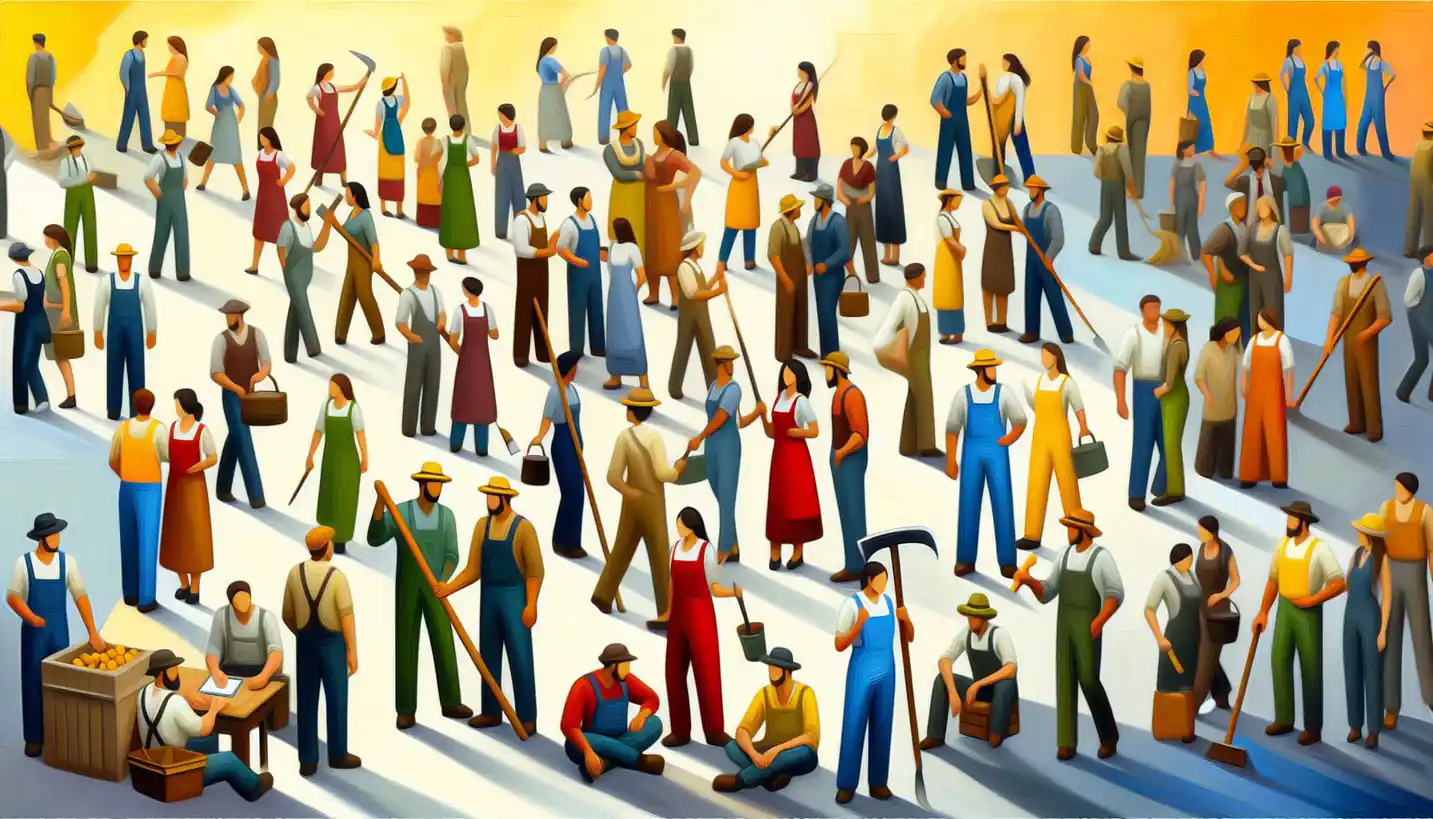· Sociology · 4 min read
Homophily: Why Birds of a Feather Really Do Flock Together in Social Networks
Homophily explains why similar individuals often connect in networks. Discover the powerful forces behind this phenomenon in social interactions.

Human behavior holds fascinating patterns, and one such intriguing phenomenon is homophily. In simple terms, homophily is the idea that people tend to connect with others who are similar to themselves. It’s like how you might find yourself drawn to colleagues at work who enjoy the same music or movies as you do.
Understanding Homophily
The term “homophily” comes from Greek, where “homo” means “same” and “philos” means “love,” so essentially, it means “love of the same.” Imagine the social circles you move in – family, friends, professional networks. Homophily explains why these groups often share similar characteristics, whether they’re based on age, interest, or even beliefs.
Social Network Analysis, a tool used by sociologists, helps us understand these connections. It’s like creating a map of relationships to see who’s linked with whom and how. If you think about your social media platforms, you’ll notice that your connections often share more than a few common threads with you. Homophily plays a big role here.
How Homophily Shapes Our World
Homophily isn’t just a curious little detail; it has big implications on society. For instance, it impacts how quickly information spreads within a network. If everyone you’re connected to thinks like you, new ideas might zoom through your circle. But this can also limit the diversity of perspectives you’re exposed to – like living in an echo chamber.
Consider how it affects communities. Neighborhoods and schools often see residents or students who come from similar socioeconomic backgrounds. This is homophily at work, shaping who we interact with daily.
Homophily and Technology
In today’s digital age, technology pushes homophily further. Think about recommendation algorithms on streaming services or shopping websites. They suggest content or products based on your past interactions, reinforcing your preferences. While this makes finding similar content easier, it might limit your exposure to new and diverse ideas.
Social media is another classic example. Algorithms prioritize content from friends and pages you engage with most. So, you often see posts that align with your viewpoints, reinforcing your existing beliefs. It’s a digital form of homophily, shaping not just individual opinions but potentially entire cultural narratives.
The Scientific Roots of Homophily
To dive deeper, let’s look at a couple of fascinating studies. A classic study by sociologists Miller McPherson, Lynn Smith-Lovin, and James Cook in 2001 laid a strong foundation for understanding homophily. Their research highlighted that our social circles tend to be homogeneous in terms of race, education, and ethnicity.
Another example comes from the field of genetics. Research has shown that individuals who are friends have more similar DNA than those who aren’t. It might seem like science fiction, but these genetic commonalities underline the natural human tendency towards homophily.
The Positives and Downsides
There are upsides to homophily. It provides comfort and validation, enhancing relationships and community cohesion. Finding common ground fosters trust and makes collaboration smoother.
However, there are challenges too. Homophily can lead to groupthink, where everyone in a group thinks alike and critical thinking diminishes. It can also perpetuate biases, as people continue to choose friends who reinforce their existing beliefs.
Breaking the Homophily Barrier
Breaking free from the homophily trap requires conscious effort. It’s about stepping out of comfort zones and seeking diverse perspectives. Engaging in unfamiliar activities, connecting with new people, and consuming varied content can help break down the walls of the echo chamber.
For organizations, promoting diversity and inclusive practices is crucial. This not only enhances innovation but also enriches problem-solving by drawing on varied experiences and viewpoints.
Future Research Directions
Homophily presents exciting research opportunities, especially as our world becomes more interconnected. Future studies may explore how digital networks amplify or mitigate homophily. What role do emerging technologies, like artificial intelligence, play in influencing social connections and preferences? As societies evolve, understanding homophily in different cultural contexts will become increasingly important.
Conclusion
Homophily offers a window into human interactions, showing why we often connect with those similar to us. While it brings both advantages and challenges, recognizing its presence is the first step towards fostering more balanced and diverse networks. By venturing beyond our circles, we can make our world not only more interconnected but truly inclusive.


